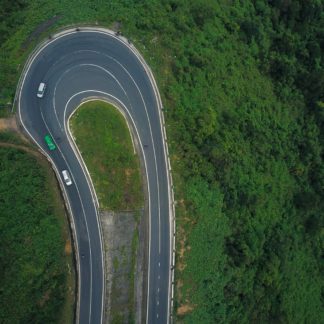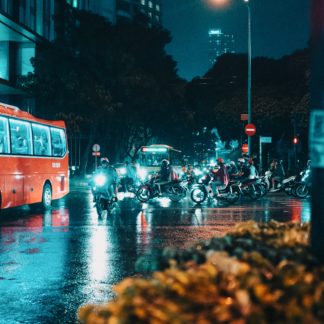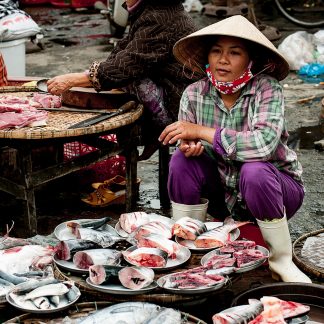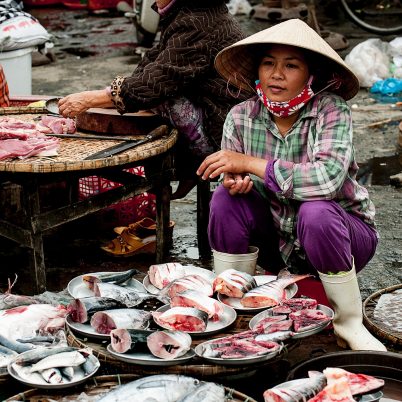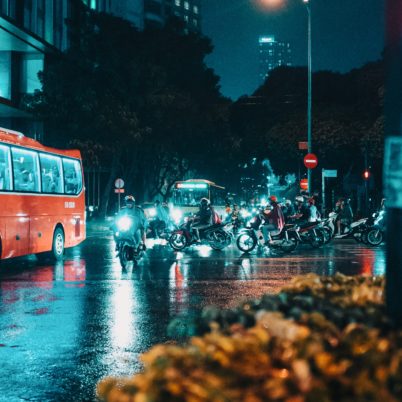Rice in Vietnam: Travelling where the rice grows.
Rice in Vietnam has deep roots in its culture and tradition. Vietnam is one of the world’s leading producers and exporters of rice, and you will see its importance while travelling through. It forms an integral part of their cuisine, with noodles to spring roll wraps to sweet buns being made of rice.
The real beauty lies in witnessing the rice terraces transform from lush green to gold as Vietnam goes through its rice harvesting seasons. These depend on the weather and rains, both of which are tricky in Vietnam. Read through to get an idea of the best time to witness the wondrous transformation process of rice in Vietnam.
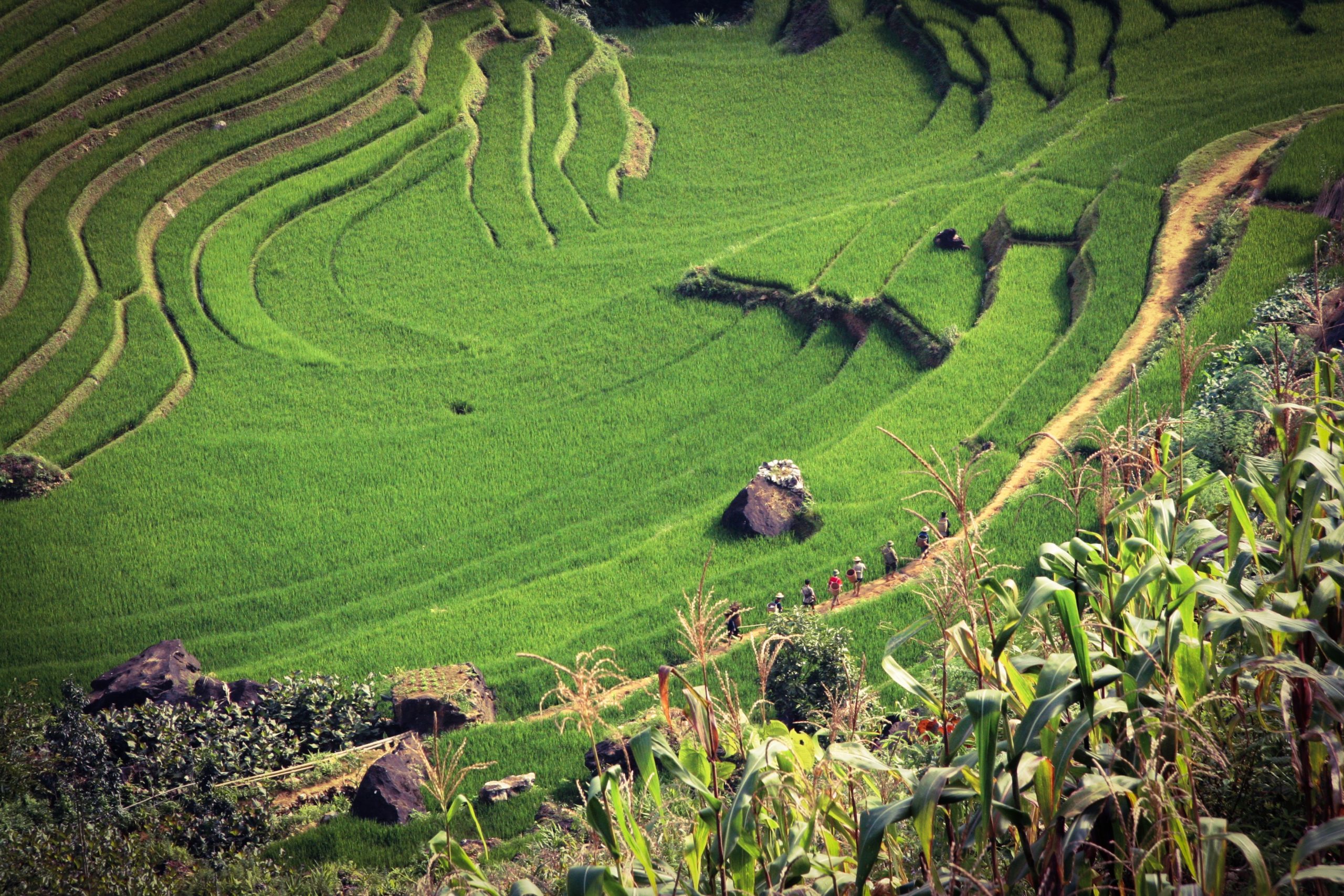 Rice is an integral part of life in Vietnam. Being one of the largest producers and exporters of rice in the world, you will witness its importance throughout the country.
Rice is an integral part of life in Vietnam. Being one of the largest producers and exporters of rice in the world, you will witness its importance throughout the country.
Sapa
The rice terraces in Vietnam are in the north, and are a major tourist attraction especially for trekkers and photographers. The terraces are all man-made, curving into the earth with every dip and bend, making it seem like it harmoniously blends in with the landscape.
The month of April in the north is hot, and sees mostly brown landscapes. This is when locals plow their fields with their buffaloes, in order to plant the rice saplings in May and June. The month of August is one of the monsoonal months, and trekking on the slippery paths are generally not recommended. However, this is a great time to witness the green-gold change of the famous terraces for rice in Vietnam.
We recommend opting for a homestay for an authentic experience. It doesn’t rain very much, the sun shines between showers so the weather is not gloomy, and it is in fact ideal for beautiful scenery and photography. The rice then gets harvested in September, lasting from beginning to mid-September. The lush gold rice terraces are a majestic sight to behold, making September an ideal month to witness it.
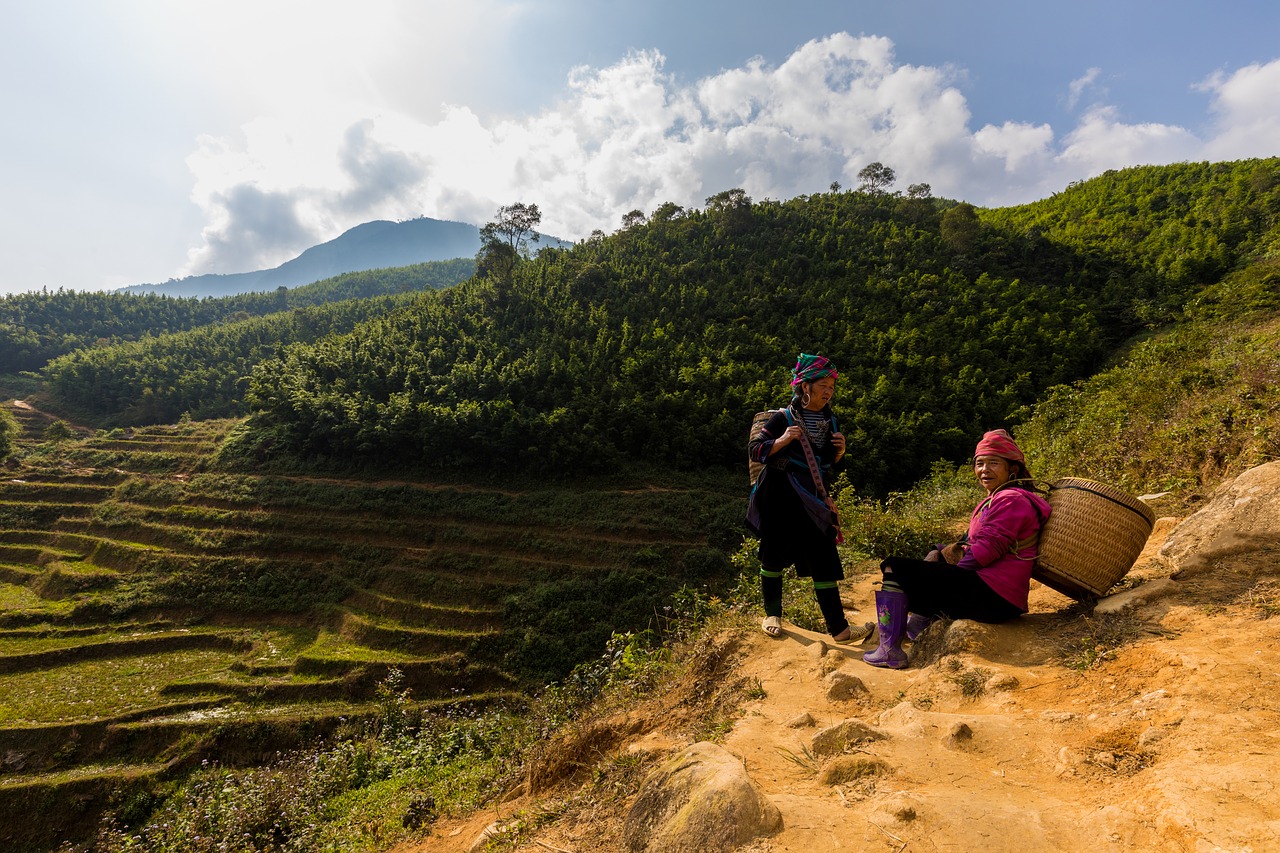 The golden rice terraces of Sapa, offering the most beautiful sight tend to attract trekking and photography enthusiasts alike.
The golden rice terraces of Sapa, offering the most beautiful sight tend to attract trekking and photography enthusiasts alike.
Tam Coc
While you can always trek up the hills of Sapa to view the rice paddies, Tam Coc offers another interesting experience: paddling through the submerged rice fields. Tam Coc is located in Ninh Binh, 100kms south of Hanoi, and you can go there on a one-day trip.
Known as the Halong Bay of the land, Tam Coc has towering karsts or limestone formations emerging from the land. The karsts have scattered themselves among the golden sheen of the paddies. We recommend enjoying them from a small paddled boat, or a trek up the hills.
The number of annual crops increases going southwards, with two crops in Central Vietnam. The best time to catch the rice in Vietnam at Tam Coc is from May to early June. The skies are clear blue and the yellow fields of rice stretch out from the centre of the Ngo Dong River below.
You can also visit in the few weeks of early September, as that is the second rice season. However, the rains will set in towards the latter half of the month, so plan your trip to see the rice in Vietnam accordingly.
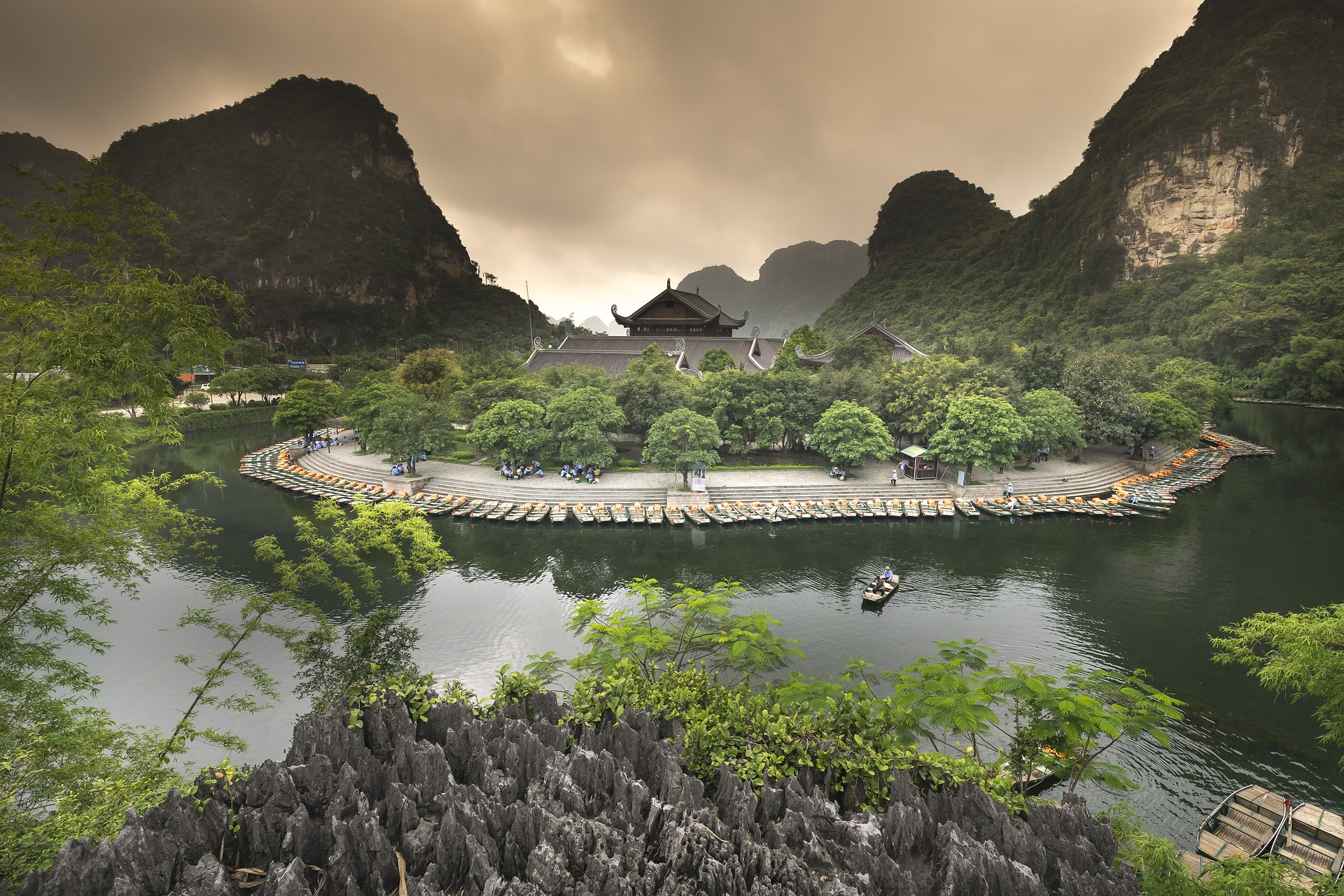 Trek up the hills in Tam Coc to enjoy scenic landscapes of majestic limestone mountains and natural grottoes.
Trek up the hills in Tam Coc to enjoy scenic landscapes of majestic limestone mountains and natural grottoes.
Ha Giang
One of the northern-most places in Vietnam, Ha Giang is similar to Sapa in terms of weather patterns. Tourists are a little less aware of this spot to witness the glory of rice in Vietnam. Come mid-September, the fields are emerald green with the rice just about beginning to ripen.
As it ripens over the next two weeks, the fields turn to shades of yellow and gold. It’s a six-hour drive from Sapa, so you can choose to cover either one or both of these destinations, making it easy for you to.
 If you are looking for a less touristy place then visit Ha Giang in North Vietnam instead of Sapa as both these destinations are similar.
If you are looking for a less touristy place then visit Ha Giang in North Vietnam instead of Sapa as both these destinations are similar.
Hoi An
Central Vietnam is not a very well-known spot for witnessing the transformation of rice in Vietnam. But, it certainly has its share of plantations, and rice fields stretch out as far as the eye can see. Locals plant the rice in January, and it shifts from green to lush gold in the month of April. This is a great time to witness the fields, as they harvest it in the month of May, post which the land is barren.
May is still a fun time nonetheless, as the farmers lay the rice out everywhere to dry, including on the road!
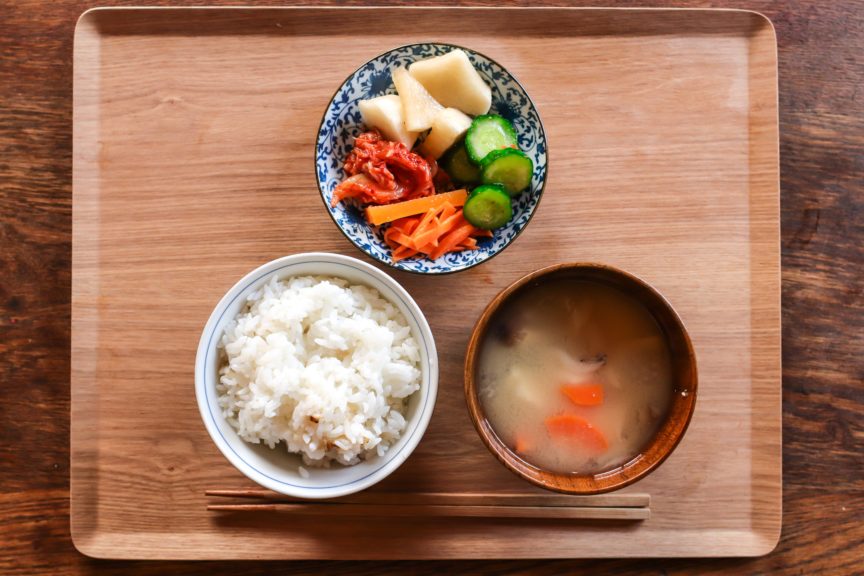 Widely grown throughout the country, rice is a staple food in Vietnam and is present in almost all the meals.
Widely grown throughout the country, rice is a staple food in Vietnam and is present in almost all the meals.
Mekong Delta
The Mekong Delta, heart of Vietnam’s rice production, is known as the rice bowl of Vietnam. Here, water, boats, houses and markets coexist to produce a generous harvest of rice. Unlike other parts of the country, the Mekong Delta in South Vietnam has three rice crops a year. Two of the seasons coincide with the rainy season of south Vietnam, usually lasting from May until October.
However, it never rains for more than a few hours and sunshine intersperses rainy days. Thus, you can see the rice harvests throughout the year. In other parts of the country, you have to choose particular months to see green or golden rice paddies.
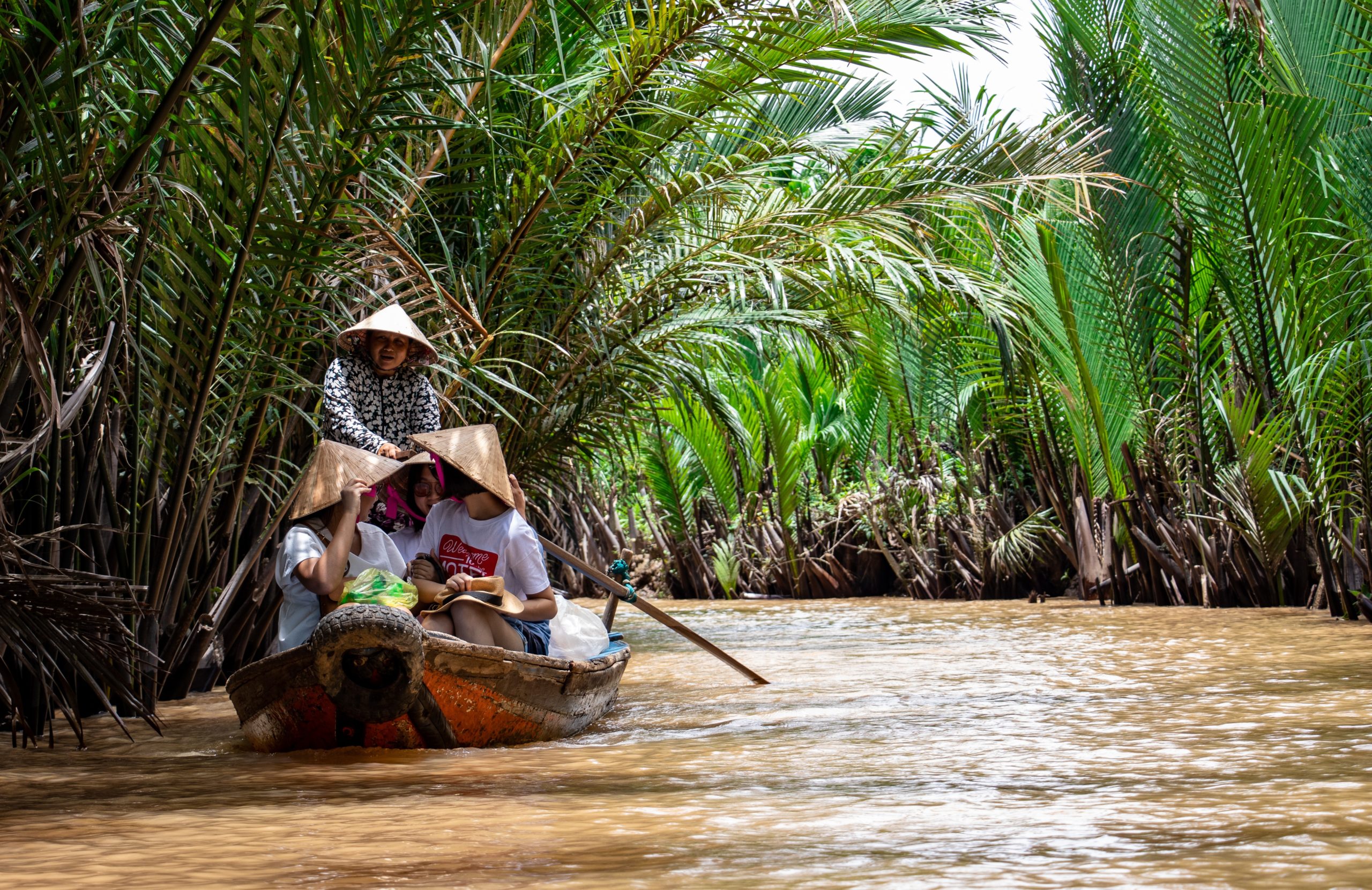 Popularly known as the rice bowl of Vietnam, the Mekong Delta is where most of the country’s rice is grown.
Popularly known as the rice bowl of Vietnam, the Mekong Delta is where most of the country’s rice is grown.
Choosing the best time to visit Vietnam is crucial, but rest assured you’ll see the beauty of rice in Vietnam nonetheless. The glory of rice in Vietnam is but one marvelous aspect of this country; you can also witness its stunning landscapes and beautiful cities, while grabbing a bite of amazing street-food on the side. From witnessing the spectacle of rice in Vietnam, to everything else, we can help you with that perfect itinerary. Just click on Plan Your Trip and leave the rest to us.
helping you travel your way
We provide a helping hand to independent travellers who need assistance with planning and booking their trip. The primary goal is to turn your dream holiday into reality.


